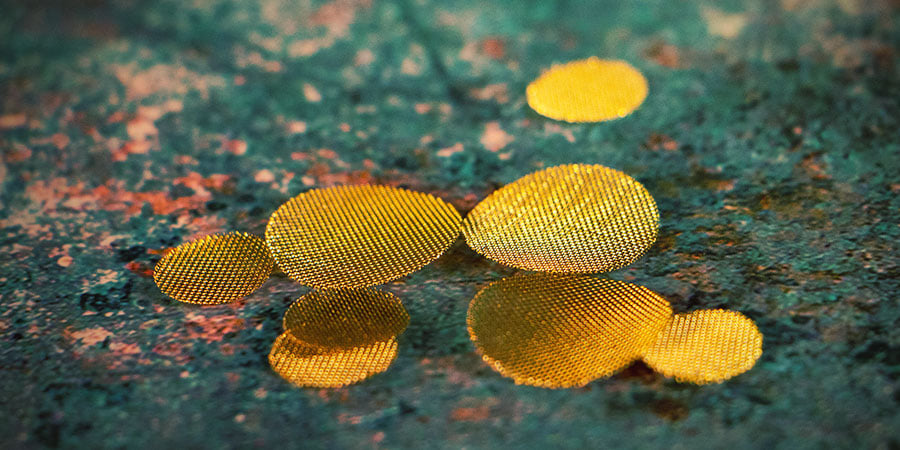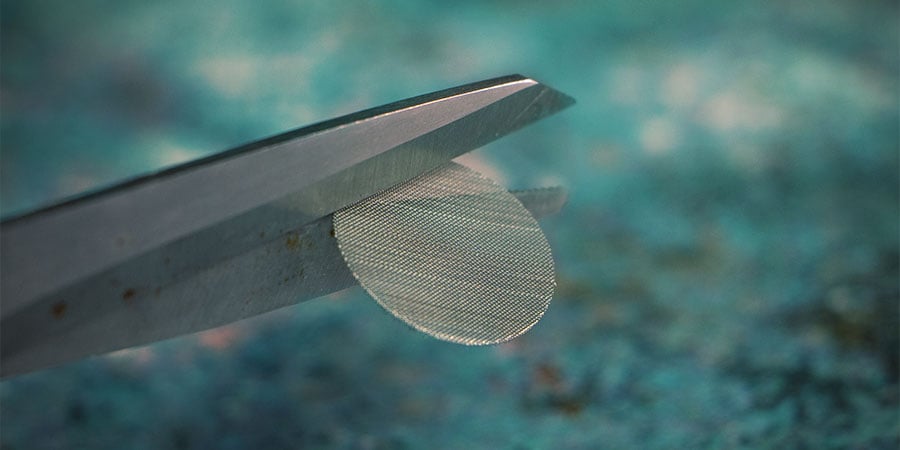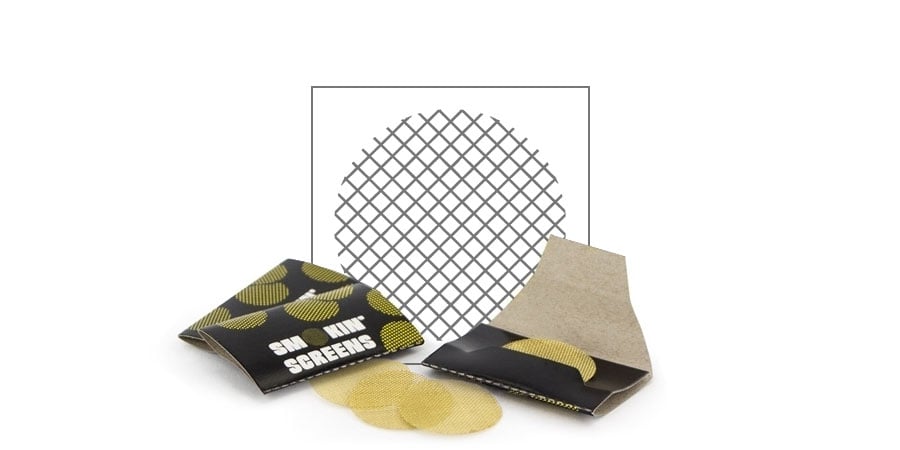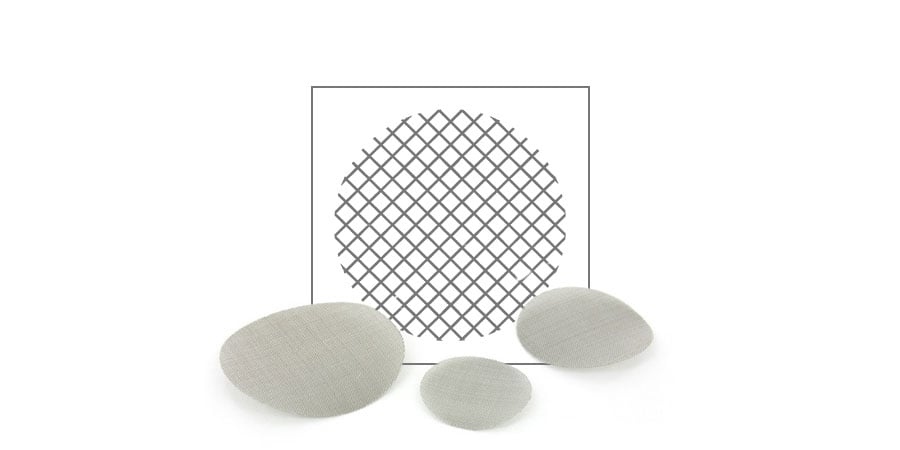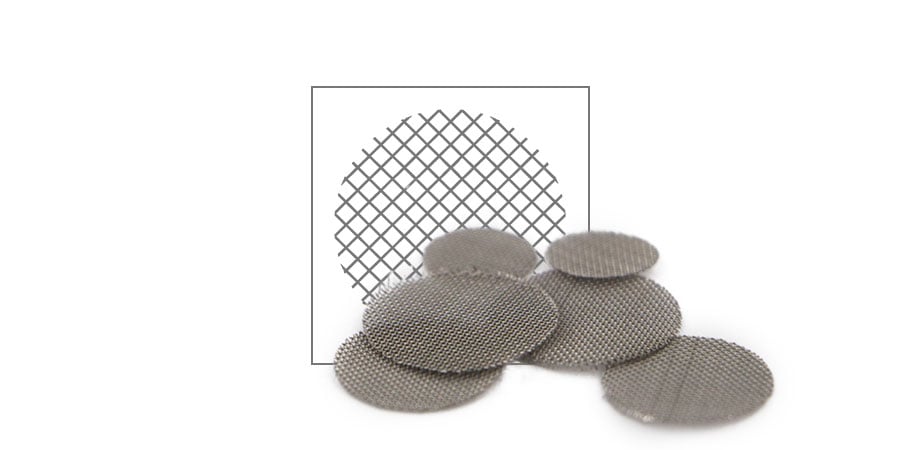The Importance Of Using Screens With Your Pipe, Bong, Or Vaporizer
Why is it important to use screens with your bong, pipe, or vaporizer? Which type of screen should you choose for your device? Read on to find out!
Nothing is worse than taking a nice hit from your bong or pipe only to end up with a mouth full of ash. To prevent this from happening, many smoking devices, including most pipes, bongs, and even vaporizers, are compatible with screens.
Now, screens aren’t exactly complicated to use, but there are some specifics worth knowing that can make a world of difference to your smoking experience. Read on as we take a closer look at the different kinds of screens, why they’re important, and what you need to know when using them with various devices.
WHAT IS A PIPE SCREEN?
Pipe screens are filters placed in the bowls or chambers of different smoking/vaping devices. They are crafted from a number of materials, including brass, stainless steel, and glass, and usually come in the form of circle-shaped mesh cutouts. They are often somewhat flexible, so you can bend them to fit in your bowl.
Many pipes use these common round mesh screens, but bongs and bubblers often use basket-shaped inserts for an even better experience. Some smoking devices don’t use replaceable screens, but have them built right in.
PURPOSE OF A PIPE SCREEN
The main purpose of a screen is to keep your weed and resulting ash in the pipe, instead of in your mouth. All you want to inhale is the smoke/vapor, not the hard material. Without a filter, smoking a pipe can be an awful experience as these nasty chunks can irritate your lungs and make for a gross time overall. Another benefit of screens is that you won’t waste as much unsmoked weed that would otherwise end up in your mouth.
HOW TO DETERMINE THE CORRECT SCREEN SIZE
If you’re using a water pipe with a basket-style screen, you need to measure your fitting first. There are two kinds of water pipe fittings: male and female. The males are those that taper toward the base and fit into the female joint. The fittings come in three sizes, 10, 14 (most common), and 18mm.
To determine fitting size, measure the outer diameter of a male fitting or the inner diameter of a female fitting.
CUTTING A PIPE SCREEN TO THE CORRECT SIZE
Common round mesh screens come in various sizes, but you can also bend them to your will (literally) if they’re a bit too big for your device. But, if your screens are popping out or go too deep into the bowl, or are just not doing their job at all, you’re probably using the wrong size screen.
If you have screens that are too large, you can easily cut them to size. Simply use wire cutters or strong scissors and trim around the edges.
How do you know if your screen is the right size? Fit it inside your bowl and try pressing it into a snug fit. If it keeps covering the bottom of the bowl and isn’t bouncing back, you’re golden.
DIFFERENT TYPES OF SCREENS
As mentioned above, screens popularly appear as a wire mesh, but come in numerous forms depending on factors related to both function and style. Here are some of the most common materials used to make pipe screens:
BRASS SCREENS (FOR GLASS / CERAMIC BONGS)
Brass screens are the most common screens for all kinds of pipes, and have been used by all types of pipe smokers for a very long time. They’re cheap, and you can get them in any tobacco store, headshop, or online. Brass screens are easy to bend, so they fit most shapes of bowls, and you can rather easily cut them to size should you need to.
Do brass screens have a disadvantage? Compared to other materials, brass won’t last as long. The reason for this is its low melting point. If you smoke heavily and often, this won’t outright melt the brass, but the continuous heat will weaken the screen over time until it eventually breaks.
STEEL SCREENS (FOR ACRYLIC / SILICONE BONGS)
Aside from their silvery colour compared to the yellowish brass screens, steel screens work just the same. Their advantage is that they're more durable, and therefore should last longer. A disadvantage is that they are not as easy to bend and shape. Another drawback is that steel screens don't always go well with glass bowls; you can use them, but be aware that they can leave scratches. Otherwise, there isn’t any difference in taste or function between brass and steel screens.
GLASS SCREENS (TYPICALLY BUILT-IN)
Pipe screens made of glass are obviously not flexible at all, which means they must be the exact size to fit your bowl. Glass has the advantage of being very heat resistant. It won’t wear out, and can, in principle, last forever.
Glass pipe screens are not typically made from ordinary glass, but from borosilicate glass (Pyrex), which is particularly heat resistant and won’t crack from rapid temperature changes.
Sometimes, you can also find screens made from quartz. These are even more heat resistant than borosilicate glass, and therefore more expensive.
Many high-quality glass water pipes don’t use replaceable screens, but feature built-in screens instead, often in some type of decorative pattern like a star or a flower.
VAPORIZER SCREENS (DIFFERENT SCREENS PER VAPORIZER)
Most dry herb vaporizers also use screens. Some vaporizers may use the aforementioned metal mesh screens, or they may use harder metal discs with holes. Unfortunately, many vaporizers don’t use standard screens, but proprietary screens that differ from model to model. This means that if you need replacements, you can only get them from associated manufacturers/retailers, as other screens may not fit. Likewise, if you have a number of different vaporizers, you will likely need individual screens for each.
DIY Bong/Pipe Screen Solutions
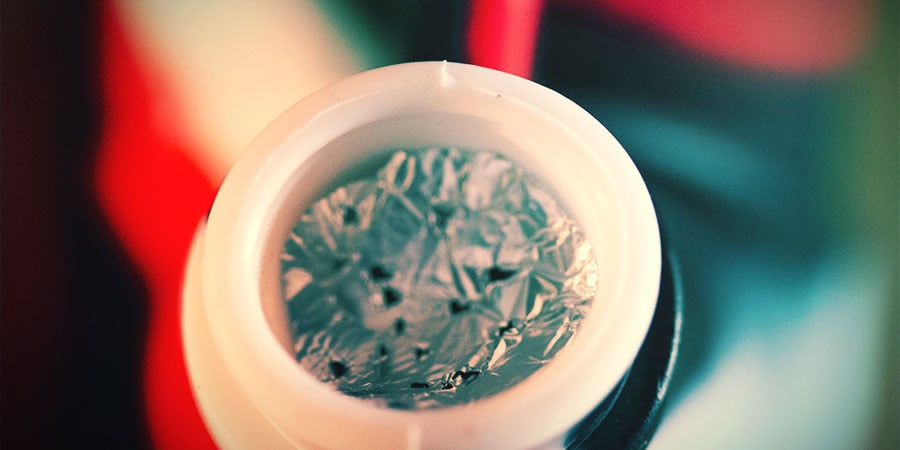
What do you do if you run out of screens, but really want to get some toking action going? Aside from ordering new ones, you can try to make your own temporary screens to tide you over until the postman rings.
The easiest way to make a DIY pipe screen it to cut a small piece of aluminum foil to fit like a regular screen. Poke a few holes in with a toothpick (not too big), and voilà! Your DIY screen should last a few sessions. No worries, aluminium foil isn’t toxic and won’t melt at these temperatures.
You can also make a temporary screen with a piece of stiff wire or a paperclip. Bend the wire into a spiral and place it over the hole in your pipe. This will keep the largest weed and ash chunks in your pipe.
Lastly, if you’re not feeling like making a temporary pipe screen, you can pack your bowl without one, being sure to place larger chunks on the underside, covering the hole. This works like a natural filter that prevents finer particles from being sucked into the stem. Just make sure to pull softly and slowly.
Of course, the best option is to use proper screens in the first place. They don’t cost much, so you can stock up on tons of them for just a few euros to never be without!
-

6 min 12 February, 2024 How To Clean Your Bong Keeping your bong clean might sound like an obvious task, but you'd be surprised just how many neglected water pipes are out there! So we're setting the record straight. Catering for all kinds of...
-

6 min 5 September, 2023 How To Use A Bong Bongs might look threatening, but they're actually fairly easy to master (if you can get past the coughing). Learn all about how to use a bong here!
-
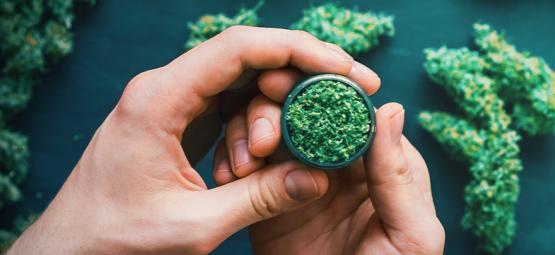
3 min 27 November, 2020 The Best Smoking Accessories Every Stoner Needs Many different devices and tools can be used to make smoking sessions easier, more efficient and even more entertaining. These accessories will help you remain stealthy, store your weed better and...
-

5 min 31 December, 2019 10 Tips On How To Get The Most Out Of Your Vaporizer Vaping is already a much more effective way to consume weed compared to smoking, but how can you make the absolute most of your vape? Here are 10 tips and tricks to help you enjoy full flavour,...




 Seedshop
Seedshop Headshop
Headshop Vaporshop
Vaporshop Healthshop
Healthshop Smartshop
Smartshop Shroomshop
Shroomshop Plantshop
Plantshop United States
United States



